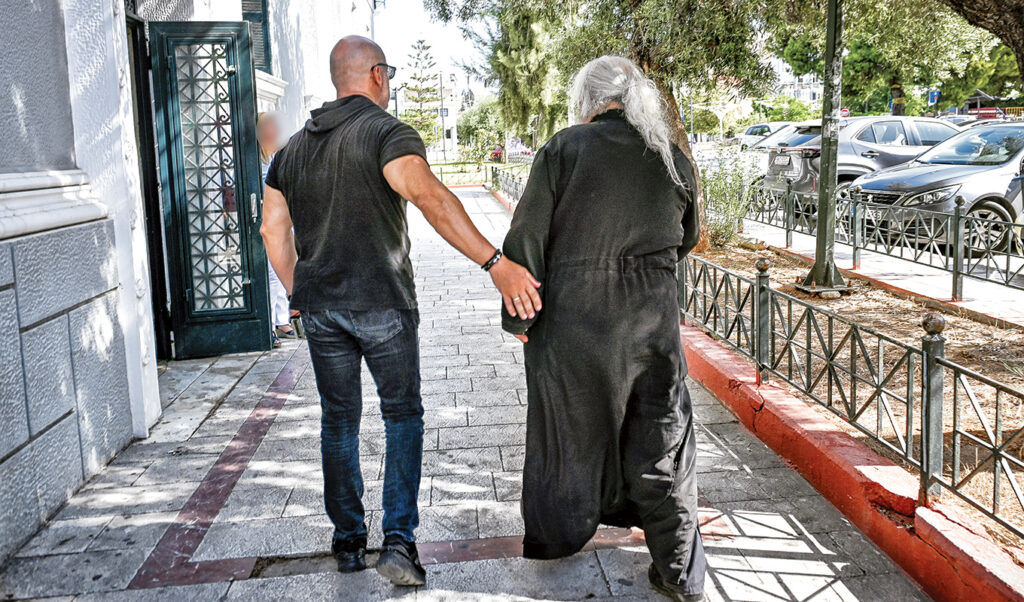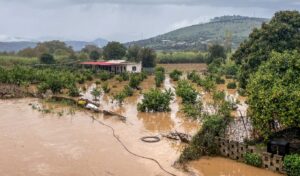This is not just a corruption case, but a stab in the trust towards the guardians of tradition and faith. The ancient artifact smuggling scandal at the Monastery of Mega Spilaio, the country’s oldest monastery, shocks not only the local community, but everything we believe about protecting our cultural heritage.
Ancient artifact smuggling at Mega Spilaio Monastery in Kalavryta: The allegations that led police to the network’s activities
At the center of the case is the unholy bargain, which cannot be disputed: the complaints that pushed a pair of police officers to infiltrate as interested buyers revealed before their eyes a… collection of “stunning beauty and historical value,” as Greek FBI officials with expertise in such artifacts describe it. Byzantine icons and two rare Gospels, nearly 300 years old, being sold at a bargain price: 200,000 euros. The monastery’s abbot, Kallinikos, and his assistant, hieromonk Serafim, were the first to be expelled by the Metropolis of Kalavryta and Aegialia. They were also those who, according to the police investigation, played a decisive role in orchestrating the stripping of sacred works.
The damage may be even greater. Given that authorities are seriously examining the possibility that these artifacts do not belong to the monastery, but to other monasteries in the Peloponnese. Some of the 17 icons for sale reportedly originated from monasteries in Laconia and Messinia. This suggests, according to authorities, that the six defendants may not be the only ones involved in this case.
Dismantling the iconostasis
“If the icon business goes well, I can dismantle the entire iconostasis if you want,” the 63-year-old abbot is reportedly heard saying, who on Thursday crossed the threshold of the investigator and was remanded in custody along with the other defendants. Undoubtedly, this is a statement that causes shock. His character had made a great impression on Greek FBI officials, as it quickly became apparent that he had secured significant amounts in bank accounts, while it was found that he also owns at least one apartment of considerable value in Marousi. The potential usefulness of such an apartment for a monk was questionable, after all.
One detail that lit another fuse is the reference to a supposedly “high-value” statue that the abbot reportedly claimed was buried in a field. It is a statue depicting the goddess Artemis and, according to what he reportedly told the undercover police officers, it is a secret he will exploit once he finds the right buyer. In fact, he reportedly claimed it costs at least 10 million euros.
Connections with “Jackson” who controlled logistics
Among the hard “core” of this unholy group is also the so-called “Jackson.” This is the person who, according to police sources, is the one who controlled all the logistics of the case. A man with a record in antiquities smuggling cases, who has the know-how in such matters. The 69-year-old man from Nemea reportedly appears to be the person pulling the strings, guiding all the others, while appearing to have connections with Cyprus and Germany. From there, he reportedly would source interested parties to “hit” the merchandise the abbot was preparing to sell off.
Simultaneously, however, another story “runs” alongside this one, which is vaguely connected. Another resident of Nemea, Corinthia, a livestock farmer by profession, reportedly is a person who had become involved with the network, aiming to sell over 200 ancient coins for 210,000 euros.
The high-profile case, however, could not have come to light if there wasn’t a “deep throat” in this story. The notorious “Thanasis” provided specific and targeted information on two occasions. If it weren’t for him, the precious treasures would have ended up in the hands of sacrilegious antiquities smugglers. On July 29, 2025, he called the authorities and reportedly said: “I know four people who want to sell antiquities. There’s also a German buyer.” While he returned on August 5, 2025: “Note down a name and a mobile number. He operates a pawnshop in Aigaleo. Another has a business in Kalavryta, while his brother is a monk there,” he added.
The entire case is, for the community of Kalavryta, for the faithful, for historians and conservators, a blow to trust. At the same time, the case raises questions about the supervision of ecclesiastical treasures, about gaps in management, and about the need for controls that concern not only national services, but also international cooperation against the illegal trade in cultural goods.
Published in Parapolitika




